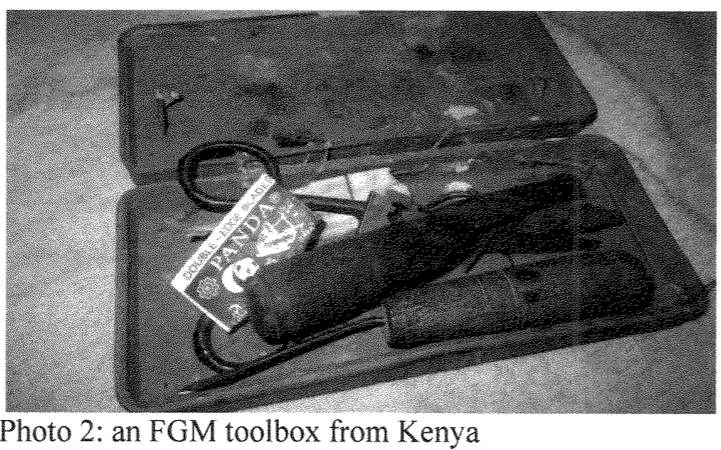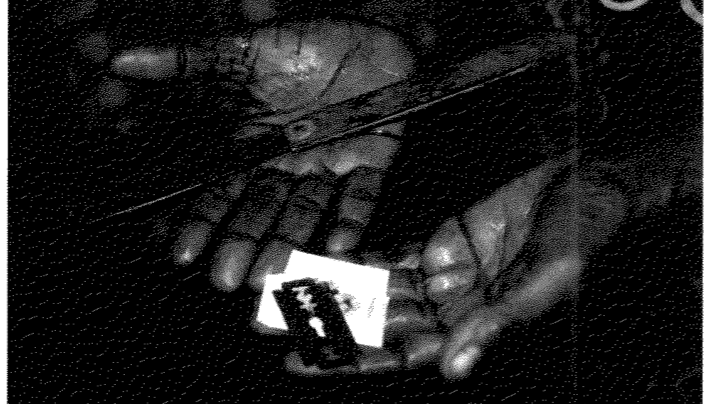Practitioners of female genital mutilation are believed to be entering Canada to perform the illegal procedure on girls, according to intelligence reports distributed to frontline border officers.

The reports obtained by Global News show the Canada Border Services Agency has been on the alert for the arrival of travelling “PFGMs,” or practitioners of female genital mutilation, for more than a year.
Photos of the cutting tools, belts and “special herbs” practitioners might be carrying in their baggage when they arrive in the country have been circulated to border officers.
Once in Canada, the practitioners are typically called into homes to perform the procedures, the CBSA Intelligence Operations and Analysis Division wrote in a report titled, “Female Genital Mutilation Practitioners Entering Canada.”
READ MORE: 2 U.S. gynecologists suggest ‘compromise’ when it comes to female genital mutilation
A second Intelligence Advisory told officers to “be aware of girls and women travelling to or returning from regions where they may be subjected to the practice.” An accompanying map highlighted countries in Africa and the Middle East.
While it has long been suspected that Canadian girls were being taken abroad to undergo female genital mutilations, the reports show that federal officials believe the practice is now occurring in Canada.
Female genital mutilation refers to “cutting of female genitalia and permanently mutilating the sexual organs of young females for non-medical reasons,” according to the Ontario Human Rights Commission.

Get breaking National news
Although it can cause chronic health problems and trauma, the procedure is used “to control female sexuality, ensure chastity until marriage and to render young women more desirable for marriage purposes,” the rights commission said on its website.
The practice has been illegal in Canada since 1997. There has never been a successful prosecution in this country but in the U.S., six people have been arrested since April for allegedly performing genital mutilations at a Detroit clinic.
In Australia last year, a former midwife, Kubra Magennis, 72, was convicted of performing genital mutilations on two girls, ages 6 and 11. Their mother was also found guilty as well as a religious cleric.
“Practitioners of Female Genital Mutilation are almost certainly entering Canada to engage in Female Genital Mutilation on both girls and women of primarily African and South-East Asian descent,” the CBSA wrote in one of the reports.
Disclosed under the Access to Information Act, the reports show that Canadian border officials have been told to treat those “committing, aiding and abetting” female genital mutilations as possible criminals. The reports were labelled as a “human trafficking” priority.
READ MORE: ‘Powerful’ mannequin challenge highlights plight of female genital mutilation
“PFGMs enter Canada with the purpose of committing a crime (aggravated assault) but may not have the awareness or belief that they are doing so. Those aiding the PFGM may also be charged in accordance with the Criminal Code,” said one of the reports.
Tens of thousands of girls and women in U.S., United Kingdom and Australia have undergone the procedure or are at risk, the reports said. Officials don’t yet know how widespread the problem is in Canada but one intelligence report said identifying practitioners at points of entry was “an important first step.”
“According to the Royal Canadian Mounted Police and Canadian health care providers, it is almost certain that FGM is also happening in Canada, despite the legislation against the practice in 1997,” it said.
“Canada has sizeable diaspora populations from Somalia, Ethiopia, Eritrea, Sudan and Nigeria, all countries where a high percentage of the female population is estimated to have experienced FGM.”
The report said PFGMs use razor blades, shards of glass, strips for binding legs as well as ash, oil and herbal mixtures. “These items may be present in the practitioner’s baggage,” it said. The “patient” undergoing the procedure and family members may greet them at the airport, it added.
“In Canada, a PFGM is most likely to be called to the home of a woman to be re-infibulated post-partum (re-sewn) or of a girl to perform the initial FGM,” the report said.
Preventing female genital mutilations is difficult because the parents “may believe it is a good thing” for daughters and it is “not culturally acceptable” for girls to talk openly about it, another CBSA report said.
A report by the Canadian Women’s Health Network said female genital mutilation was considered a form of child abuse and those at risk could be removed from their homes to prevent it from happening.










Comments